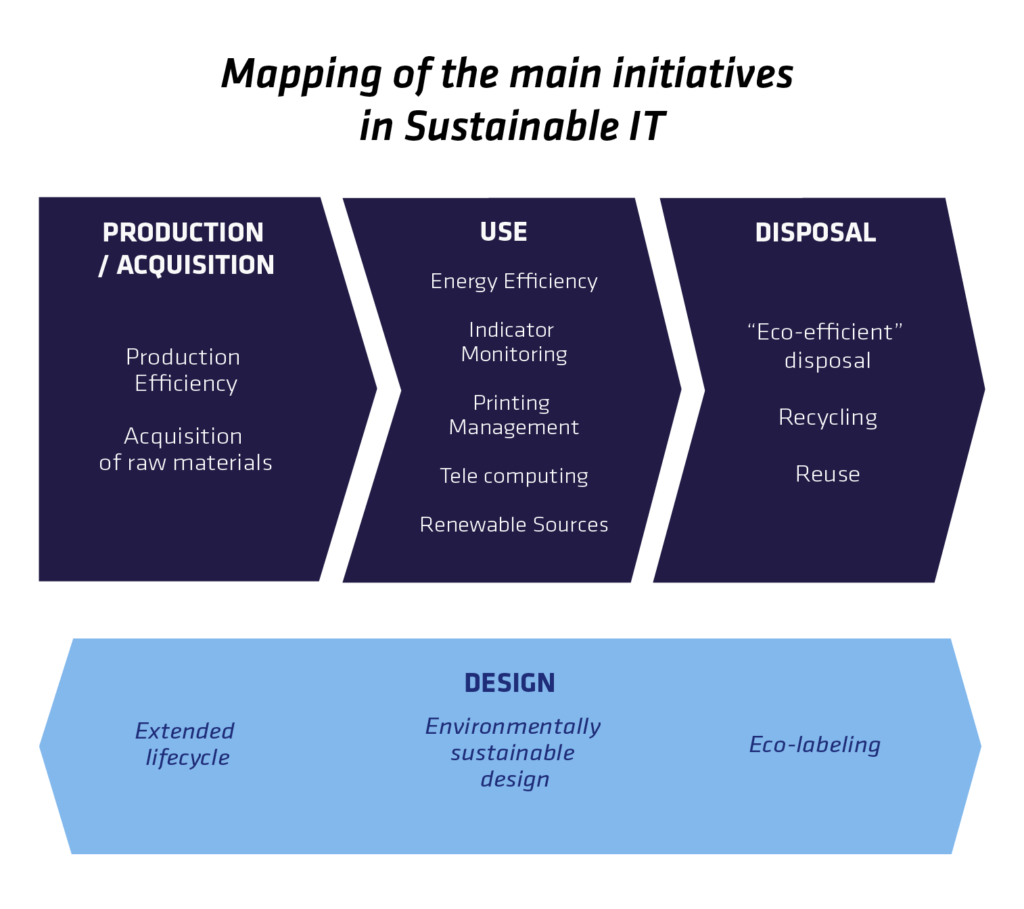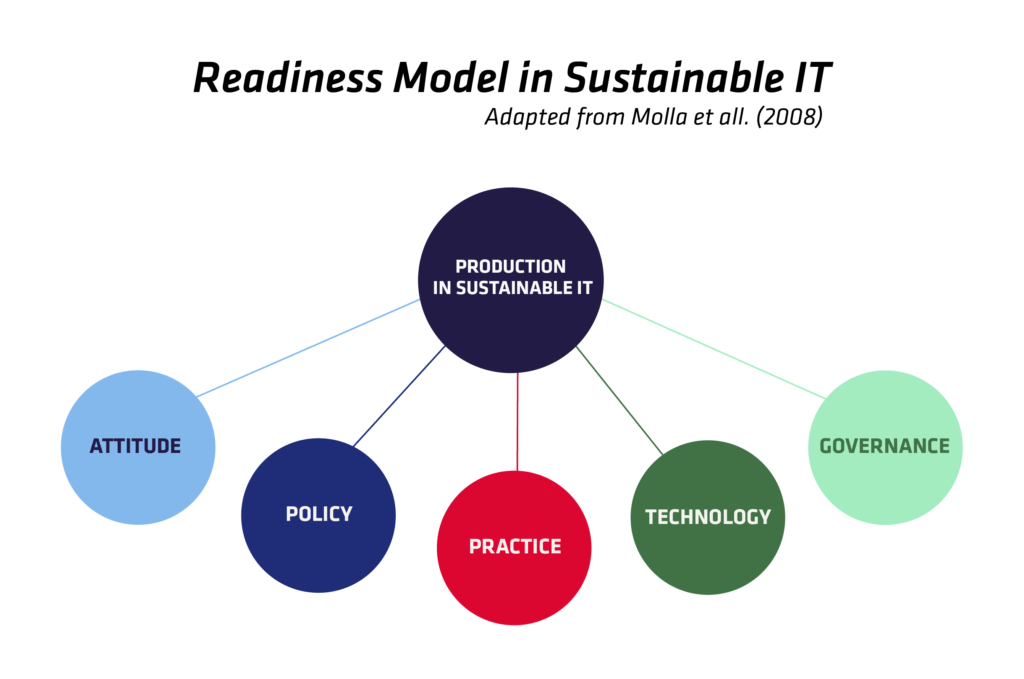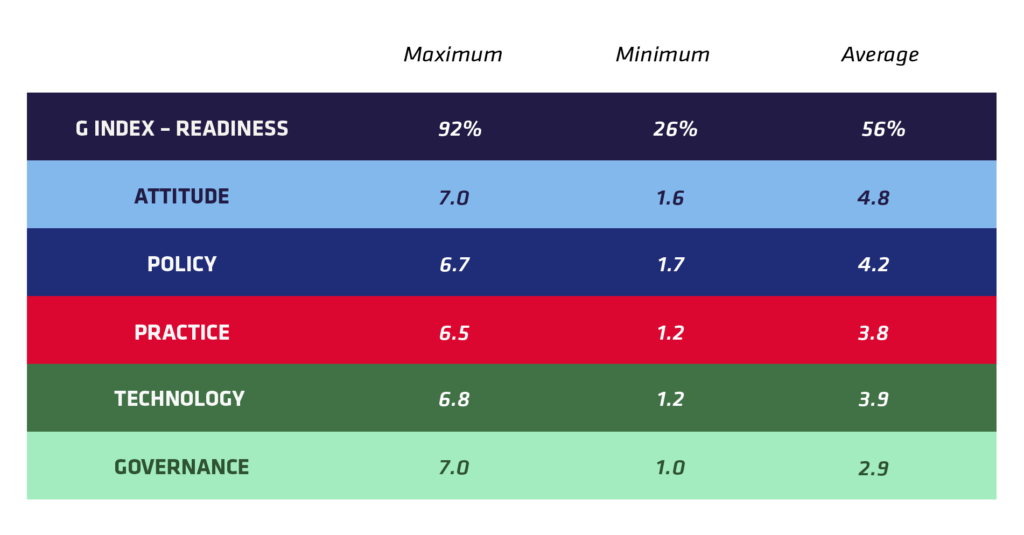IT and its social-environmental impacts
There is no doubt about the importance IT has earned within an organizational management context. Indeed, all economic sectors use it and are even dependent on it, even if at varying degrees. Advances in IT within organizations have changed everything from the way we control routines and internal resources to the ways we interact with stakeholders, allowing for the emergence of new business models that before where unimaginable. Sectors like commerce, transport, and the hotel industry have experienced true revolutions sparked by online platforms that presented an innovative method, yet one entirely dependent on IT to join the demand and offer of products and services.
Despite the countless related positive impacts, the intensive use of this type of technology also produces increasingly more significant collateral effects. In terms of environmental sustainability, for example, it is estimated that IT is responsible for over 25% of greenhouse gas emissions released into the atmosphere, exclusively caused by the energy used to power our technological infrastructure. With the advent of new technologies that make intensive use of energy, like blockchain, this scenario becomes even more concerning.
Besides the high-energy consumption, the concern with the correct disposal of this equipment is crucial, since it also results in a range of different significant impacts, both environmental and social. These impacts include the degradation of ecosystems and incidence of disease caused by the over-exposure of adults and children to substances that are harmful to human health present in the composition of this equipment. IT equipment is therefore responsible for a considerable portion of the environmental impacts generated by human activity, whether through the consumption of energy during the manufacturing and use of the equipment or through the disposal of toxic materials into the environment at the end of their useful life. Regardless of the severity of these impacts, the IT area appears to have progressed less than it potentially could have to reverse these.
Beyond energy efficiency
Sustainable IT practices emerged to help reduce the energy consumption of IT equipment and infrastructure, focused primarily until then on the low efficiency of Data Centres. From there on out, other alternatives focused on mitigating the different impacts of IT emerged over time, permeating the entire lifecycle of these resources (see the figure below). Information systems can also serve as catalysts for sustainable initiatives that extend beyond the IT domain, providing the necessary support for the other areas of the organization to implement initiatives in this sense. Examples include everything from environmental indicator monitoring systems to tele computing support systems.


Absence of disseminated metrics to promote sustainable IT initiatives – Definition of the model
Based on the scenario described, one of the greatest difficulties related to the promotion of sustainable IT initiatives is the absence of metrics to evaluate these initiatives that are standardized and disseminated throughout the entire industry. It becomes much more complicated to engage stakeholders and focus their efforts on a topic when we do not have a clear and detailed notion of the current status of the initiatives within the organization, primarily when compared to market practices.
Taking this into consideration, researchers from the Royal Melbourne Institute of Technology (RMIT) in Australia developed a survey instrument designed to assess companies’ maturity level when it comes to sustainable IT practices. As shown in the figure below, the model in question defines readiness in sustainable IT as a main area and breaks it down into five components: Attitude, Policy, Governance, Practice, and Technology.


ATTITUDE: Translates the awareness of managers and other employees about the importance of sustainability in the IT area.
POLICIES: Analyses the scope and maturity of internal policies in the area of sustainable IT and reflects whether environmental considerations systematically permeate IT activities in a coordinated and efficient manner when it comes to the organization’s management.
PRACTICE: The analysis of sustainable IT practices can be understood as the establishment of internal policies in sustainable IT in organizational processes and should permeate all activities from the IT equipment lifecycle.
TECHNOLOGY: Analyses the level of technological innovations in acquisition processes, as well as the use and disposal of technological assets, crucial for implementing sustainable IT initiatives.
GOVERNANCE: Analyses the maturity of goals, roles, and responsibilities for sustainable IT initiatives, together with the involvement of the top management and control mechanisms for the initiatives.
The Survey
Using this model, the team of researchers from RMIT created a questionnaire with over 60 objective questions in order to evaluate each one of these components in the organizational setting, classifying them according to their level of maturity based on the responses received. The survey included organizations in Australia, New Zealand, and the United States, and their results can be viewed here.
Sustainable IT in Brazil
The same survey format was then applied in Brazil, directed at top management in the area of IT (CIOs or equivalent) of organizations. In all, some 50 responses were obtained from companies within a range of different sectors that help us understand the Brazilian reality in the area of sustainable IT.


Analyses
Analysing the dimensions, these results indicate the existence of an awareness raising movement created by employees that favours the implementation of sustainable IT initiatives at their organizations. However, the lack of systems and governance structures to support these initiatives appear to counter this behaviour.
When we compare the results obtained in the international survey with the Brazilian survey, we can see certain similarities. The general average index of the Australian survey was 55%, presenting a difference of only 2 percent between both. In the same sense, the organizations earned a higher average in the Attitude dimension in both surveys. This indicates that the organizations operating in Brazil can be aligned with the international context in terms of readiness in sustainable IT. Nevertheless, the surveyed companies did not present an elevated maturity level when it came to the adoption of sustainable IT practices, indicating a high potential for progress in this area. Conducting new surveys – both within the academic and corporate spheres – that are focused on understanding and measuring sustainable IT is an important step in this direction.
About the Author
Humberto Thiengo is a consultant at Visagio who has participated in organizational restructuring, expense optimization, and business process engineering projects at companies from a wide range of sectors. Humberto earned strategic planning experience by analysing prospective scenarios and through organizational performance diagnostics. Humberto participated in evaluations of new market trends, negotiations of assets and international partnerships involving different business units at Telecommunications companies.


